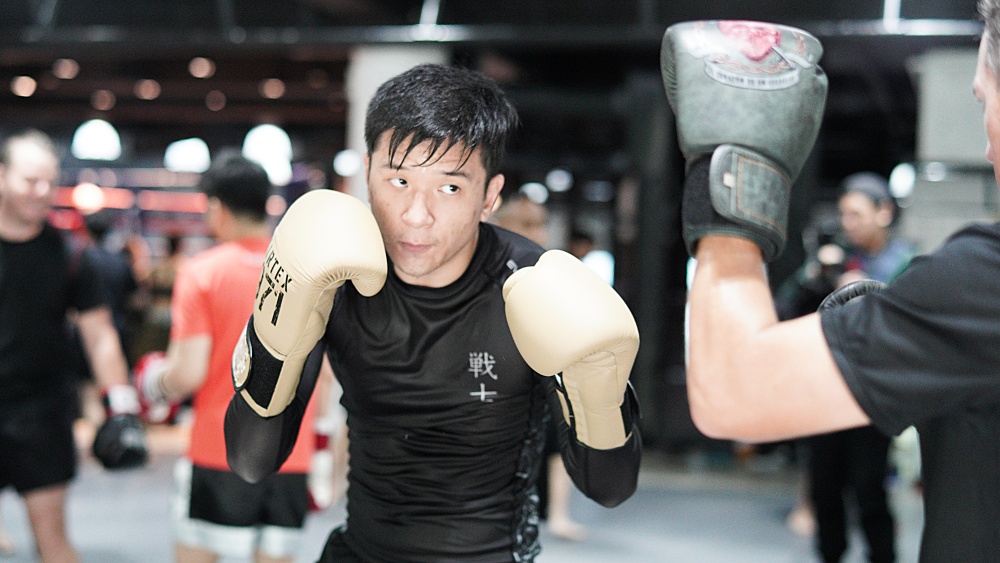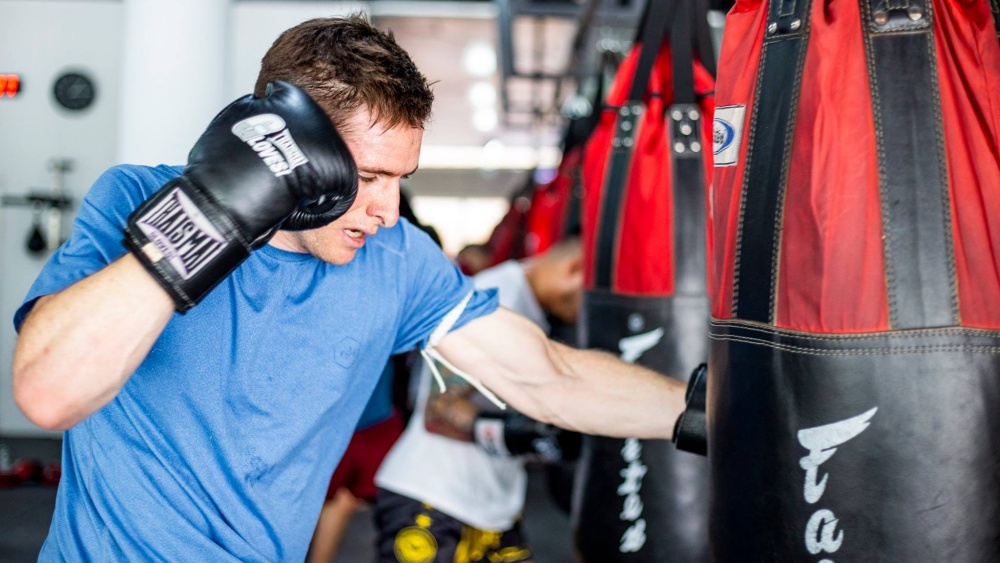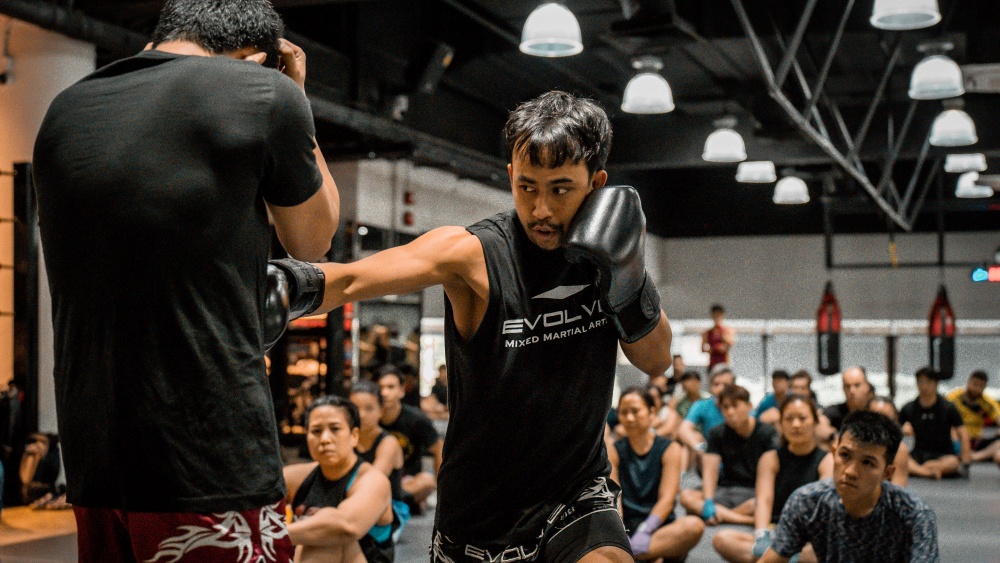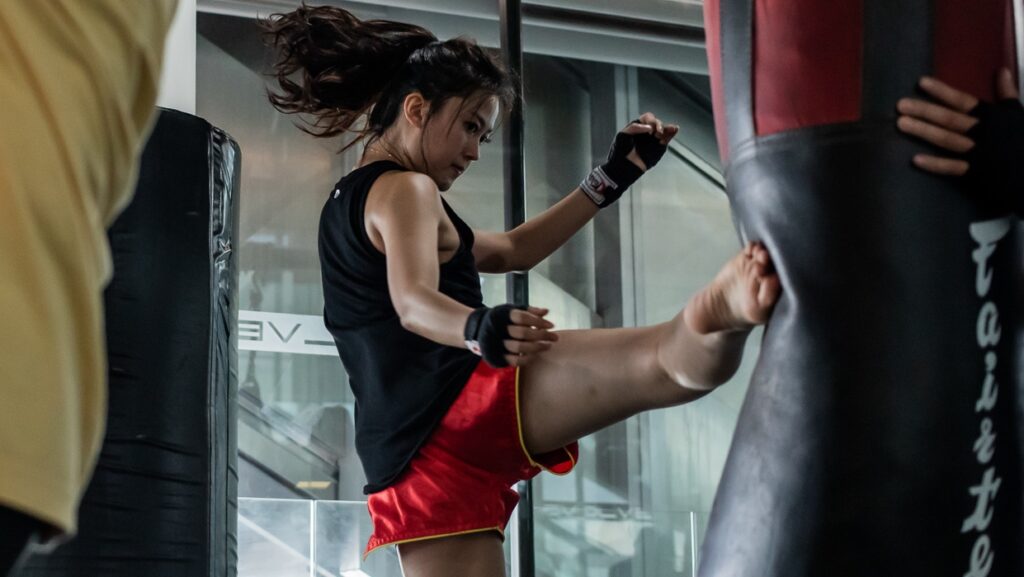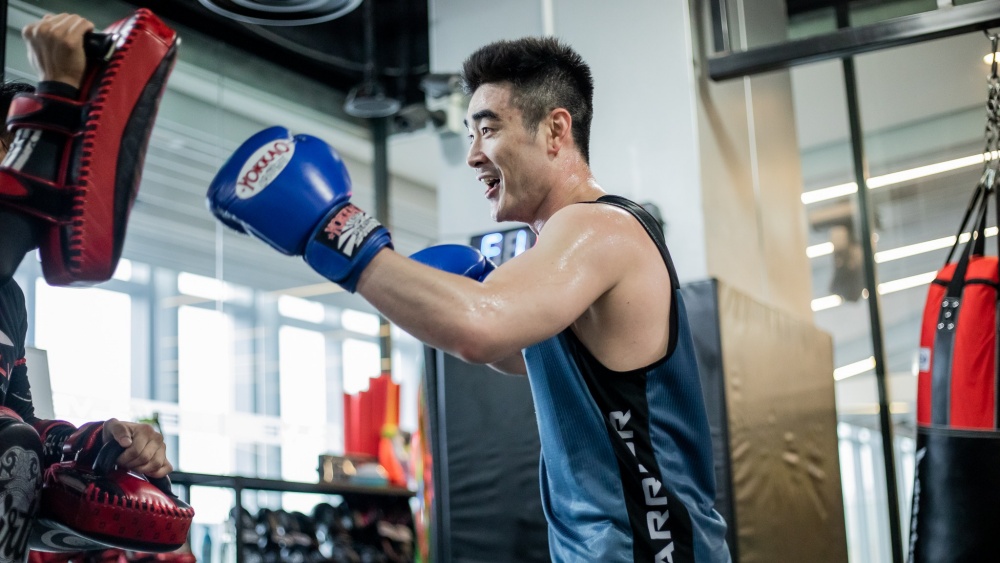More than ever, it is important for women to be able to defend themselves in a self-defense situation. Although it is always best to disengage and avoid any situation, there may be a time when leaving is not an option. In case of a situation such as this, knowing a martial art can help keep you or your loved ones safe until they can disengage and leave. Out of all of the martial arts, Muay Thai may be the most efficient for women’s self-defense. Today, Evolve Daily is pleased to share a guide on ten reasons why it’s important for women to learn Muay Thai for self-defense.
Kicking At Range With The Push Kick
In a self-defense situation, it can be useful to keep an attacker at a distance. The best tool for this is a basic teep. The teep, also called a foot jab, is a front push kick, usually with your lead leg. The teep is thrown with your weight on your back leg and a slight thrust of your hips to generate some pop. Your lead leg is lifted with your knee bent and pointed towards your target. Once your knee is pointed at your target, extend your leg with a snap, much like a front snap kick from other traditional martial arts. The teep is a long-range kick that can be used outside of punching range, even against a larger attacker. Check out the video above on how to execute a front push kick and the video below as we explain the technique of the side teep.
The main difference between the side teep and the front teep is your initial stance. The front teep starts with a more squared-off stance, whereas the side teep starts from a more bladed stance and is thrown with your rear heel on the ground for stability. The side teep has more range and power than the front teep, making it a perfect technique to practice for a self-defense situation.
The teep can also be thrown with your rear leg. The rear leg teep is slower, but more powerful than the lead teep. It should be used sparingly, as it can bring you closer to your opponent if you miss. To perform a rear teep, step forward slightly with your lead foot at a forty-five-degree angle. Your lead heel should be lifted off of the ground. Your rear leg is lifted with the knee bent, snapping out at the end of the kick like a lead teep. As you extend your rear leg, turn your rear knee and foot out at a forty-five-degree angle as you make contact with your attacker. The outward turn of the foot creates more surface area for your rear teep to land with. Above is a video on how to throw the rear teep by Silapathai, a stablemate of Saenchai.
Low Kicks For Escapes
In addition to the teep, the low kick can be an effective tool for self-defense. Landing a low kick to an untrained attacker can immobilize them, giving you an opportunity to escape. Aiming for the calf instead of the thigh is especially effective in a self-defense situation. The calf is a smaller muscle than the thigh and is damaged much more easily. It’s also possible for you to sweep your attacker off of their feet completely if you land a hard calf kick on the leg that the majority of their weight is on. Take a look at the video above which explains and demonstrates the calf kick.
A setup low kick is another effective variation of the low kick that is suitable in a self-defense situation. It does less damage than a standard low kick, but is much faster and gives you the option of following up with other strikes or disengaging. Check out the explanation of how to set up the low kick in the video above.
In general, it is wise to avoid punching range in a self-defense situation, especially against a larger attacker. However, this is not always possible. The ability to throw and defend against basic punches is a crucial aspect of self-defense.
The basic punches are the jab, body cross, lead hook, rear hook, and lead hook to the body. Being able to throw these punches will greatly increase your self-defense capabilities. The videos above teach you how to execute some of these basic punches.
Defending punches will require you to become comfortable with blocking or parrying. The standard high guard does work but has many gaps when utilized without gloves. A common but effective alternative to the high guard is the long guard. This is when your lead hand is extended to block the path of incoming punches. Your rear hand is kept in a high guard by your head in case anything slips through your lead arm. Understand how to use the long guard for the street in the video above.
The Dracula guard is a variation of the long guard that can also be effective in self-defense situations. In the Dracula guard, your rear hand rests on the opposite side’s shoulder, with your elbow draped across your face. This resembles Dracula covering his face with his cape and is where the name originates. The Dracula guard gives your head and chin protection from most punches when used in conjunction with an extended lead arm. Above is a video of Sean Fagan, a professional Muay Thai fighter, explaining the technique.
Close Contact & Clinching
Basic grappling skills are essential for self-defense, as an attacker will often grab someone they are targeting. If possible, you want to establish a two-handed plum, which means you have both of your hands on the back of your attacker’s head with your forearms on either side of their neck. This position gives you control of their movement and allows you to land knees and elbows.
Having one hand behind your attacker’s head and the other controlling one of their arms is also an effective clinch position. You want to either secure an underhook or establish bicep control with your arm that is not wrapped behind your attacker’s head. This position still gives you control over their movement but also prevents them from reaching for any potential weapons they may have. Here are two videos that delve deeper into clinching. Check out the video above featuring multiple-time Muay Thai Champion Petchboonchu FA Group showing 5 different clinch grips.
Sparring And Contact Training
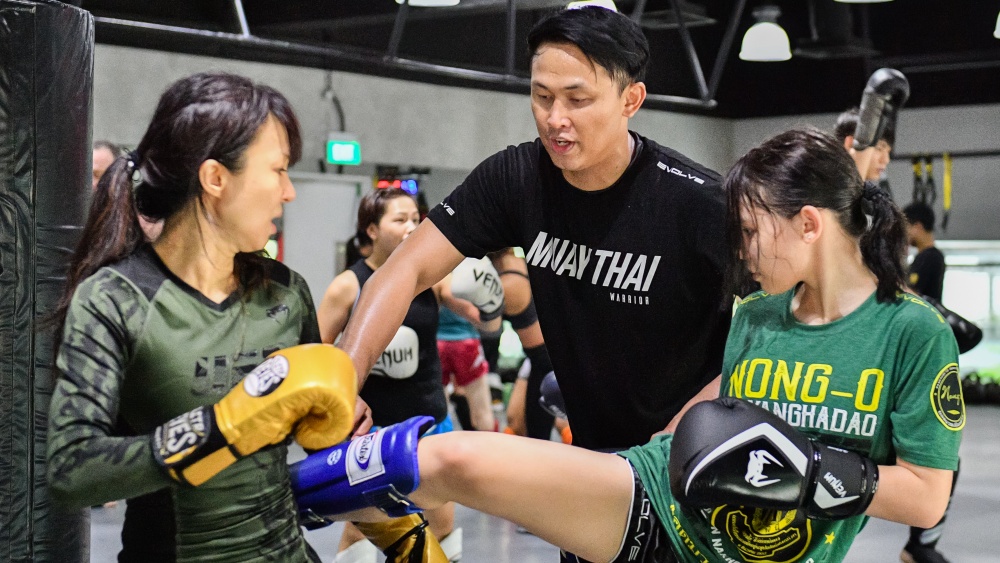
Part of what makes Muay Thai so effective for self-defense is the frequency of sparring. Even light contact or touch sparring helps you acclimate to combat. If you are comfortable with sparring harder with protective gear, this can give you an edge in a self-defense situation. The contact training of Muay Thai allows you to find what best suits your physical and mental attributes. For example, if you have long limbs and are uncomfortable with people punching you at close range, you can focus your training on your teeps and round kicks to maintain distance.
Heart Of A Fighter
Finding your inner strength is one of the most important aspects of Muay Thai. It is often called the heart of a fighter and is the difference between a good fighter and a champion. This same concept can be applied to a self-defense situation. Finding your fighter’s heart will allow you to respond and react to an attacker, instead of panicking or freezing. Muay Thai training also helps you to actually use the techniques you have trained on an attacker, instead of being worried about causing them harm. Even a small amount of training will give you quiet confidence and may deter any potential attackers.
Book your complimentary trial class with our World Champions below!
If you have any other questions regarding Evolve MMA and the programs we offer, you can get in touch with our membership executives at the following locations:
Evolve MMA (Far East Square)
26 China Street
Far East Square #01-01
Singapore 049568
Phone: (65) 6536 4525
Evolve MMA (Orchard Central)
181 Orchard Road
#06-01 Orchard Central
Singapore 238896
Phone: (65) 6536 4556
Evolve MMA (KINEX)
11 Tanjong Katong Road
#02-52 KINEX
Singapore 437157
Phone: (65) 6288 2293
Evolve MMA (Clarke Quay Central)
6 Eu Tong Sen Street
#04-18 Clarke Quay Central
Singapore 059817
Phone: (65) 6226 2150
Evolve MMA (Star Vista)
1 Vista Exchange Green
#02-26A The Star Vista
Singapore 138617
Phone: (65) 6539 9590
